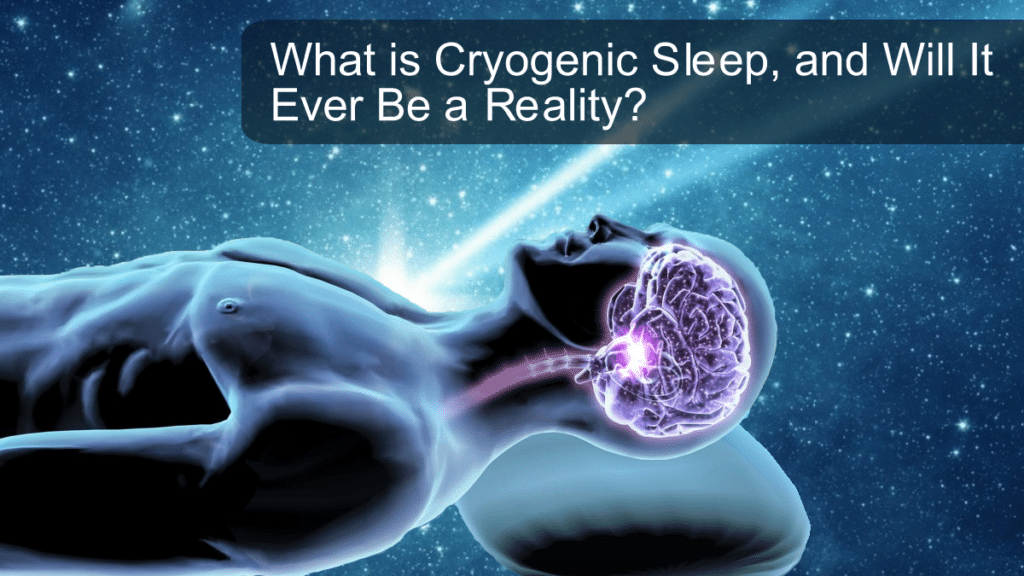Sleep Talk Blog, Health & Wellbeing
What is Cryogenic Sleep, and Will It Ever Be a Reality?
Table of Contents
Twenty-eight thousand years ago, in the harsh, frozen landscapes of what we now call Siberia, a remarkable event occurred. A young cave lion cub, caught in the grip of freezing temperatures, succumbed to the bitter cold. This seemingly tragic moment would later prove to be an extraordinary preservation of ancient life.
Sparta, the remarkably well-preserved lion cub, emerged from her icy tomb this year, having remained untouched in Siberia's permafrost for millennia. Her discovery has captivated scientists and sparked fascinating discussions about nature's own preservation methods.
The exceptional state of her remains stands as one of the most impressive examples of natural preservation ever documented, prompting intriguing questions about our ability to harness similar processes for human preservation and exploration.
These discoveries lead us to some of humanity's most ambitious questions: Could we potentially freeze ourselves and awaken in a distant future? Is it within our grasp to outsmart death itself? Most tantalizingly, could cryogenic sleep be the key to interstellar travel, allowing us to traverse vast distances between star systems by dramatically slowing our biological processes?
Cryosleep and sci-fi
Cryogenic sleep is romanticised as the best way to hop through the universe in science fiction. It conveniently resolves the problem of the time it takes to travel huge distances while letting us keep our fleshy, organic shells.
Cryogenic sleep is said to preserve people for years, perhaps even centuries or millennia, which would turn us into a starfaring civilisation.
We could explore the nearest stars in the observable universe with no physical ageing during travel time with cryogenic sleep.

What we love about cryogenic sleep is the idea that you wake up as if no time has passed, just like falling asleep and waking up the following day is instant.
Hopping across the universe is a doddle with no visual sense of time.
But it begs the question, will cryogenic sleep be a reality? Or will it always be confined to sci-fi as a tool to tell stories conveniently?
What is cryogenic sleep?
First, let's nail down what cryogenic sleep is and isn't.
Today, you can pay around £200,000 to be vitrified in a cryogenic sleep chamber after you die. The cryopreservation process freezes you so rapidly your cells freeze while living with no crystallisation.
This is not cryogenic sleep.
'Cryogenic sleep' is suspended animation, i.e. you are suspended alive.
You cannot be woken up from cryopreservation because you are dead, but you can be woken up from suspended animation.
The science (or science fiction) behind most cryogenic sleeping chambers we see in sci-fi is similar to vitrification, where you are frozen ice-free.
Cryo chambers, as they are called, instantly freeze the occupant in a process that isn't entirely explainable with modern science, except to say that the body is flash-frozen like the chicken nuggets on a manufacturing line.
Another method is artificially making a human enter a deep state of hibernation.
We know, for example, that all animals can enter a state of hibernation. In cryogenic sleep, the body's functions slow down chemically.
This is known as hypersleep, and it is the preferred technology in Passengers (2016).

Will cryogenic sleep ever be a reality?
Yes, today!
NASA has developed a cryogenic sleep chamber for astronauts that lowers the astronaut's body temperature to (32-34°C), triggering natural hibernation by sending the metabolic rate into suspended animation for up to two weeks.
The idea is to suspend astronauts for a few weeks to reduce resources and make long-distance space travel tolerable (such as the seven months it takes to get to Mars).
Contrary to what you might read elsewhere, however, we are nowhere near to the fancy cryogenic sleep seen in sci-fi, either theory or practical application.
Suspended animation, or deep hibernation, is more likely than frozen cryonics, which is viewed as pseudoscience because the process of cryonics can only begin after someone is legally dead.
This is no good for star travel!
In the future, this could change. Cryonics might open up to living patients who wish to be cryogenically frozen, hoping they can be woken in the future.
This brings several ethical, legal and human concerns that we may never hurdle.
The cryogenic sleep pods you see in sci-fi movies like Alien (1979), where the occupant enters a state of stasis (suspended animation) to slow down ageing, are more likely than the freezing pods we see in other sci-fi stories.
The problem with freezing is it causes irreparable and catastrophic cell damage, whether it is ice-free or not. Cells frozen living could survive for thousands of years, but you as a person would almost certainly be dead.
Of course, the future is not written. We may become a starfaring civilisation one day, although we might not take our biological bodies with us.

